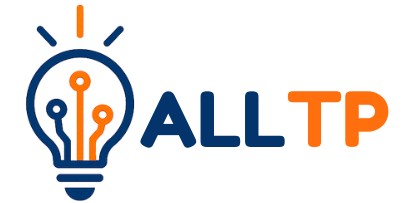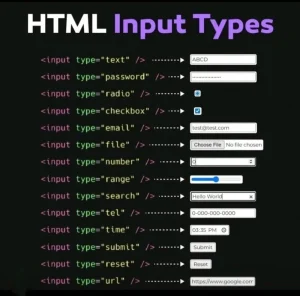Kenya is rapidly establishing itself as a digital hub in Africa, with Nairobi often referred to as the “Silicon Savannah” due to its vibrant tech ecosystem. From mobile banking innovations like M-Pesa to government investments in ICT infrastructure, the country is embracing a digital future. This growth is creating new career opportunities and reshaping how industries operate, making digital skills more important than ever.
Globally, education systems are evolving to keep pace with this shift. Countries are integrating digital literacy into their core curricula, with coding recognized as a foundational skill, just like reading, writing, or math. Nations like the UK, India, and Estonia have made coding a compulsory subject in primary schools to ensure their children don’t fall behind in a tech-driven world. Coding for kids is the key to future readiness. Parents, now is the time to act. Enroll your child in our Bootcamp and set them on a path toward becoming confident digital creators and future tech leaders.
In this context, it’s vital that Kenya follows suit. Introducing coding in Kenyan primary schools is essential, not only to prepare children for future jobs but also to sharpen their problem-solving abilities and bridge the widening digital divide between rural and urban communities.
The Digital Future of Kenya
Kenya is earning its place as Africa’s “Silicon Savannah,” thanks to the growth of innovation hubs like Nairobi and the development of smart cities like Konza Technopolis. These spaces are nurturing startups, attracting global tech giants, and creating thousands of digital jobs in fields such as software development, cybersecurity, data science, and artificial intelligence.
As this digital ecosystem expands, so does the demand for tech-savvy workers. Employers across all sectors, from agriculture to finance. Kenyan industries are increasingly seeking professionals with skills in coding, Kenya initiatives, automation, and digital platform management. The future workforce will need far more than basic computer literacy; it will require fluency in digital tools, especially coding.
Recognizing this, the Kenyan government has introduced ICT initiatives aimed at integrating technology into education. Programs like the Digital Literacy Programme (DLP), which distributed tablets to primary schools, and the inclusion of coding-related content in the Competency-Based Curriculum (CBC) are steps in the right direction. However, for Kenya to fully unlock its digital potential, coding for schools in Kenya must be introduced earlier and more intentionally in the classroom, even as early as age 6.
Benefits of Teaching Coding at the Primary Level
Introducing coding in primary school offers numerous long-term benefits that go beyond just learning to write computer programs. It’s about building a foundation for lifelong digital confidence and capability.
In the context of Coding Kenya’s digital future, teaching coding early empowers students with problem-solving skills, logical thinking, and creativity, all essential for thriving in the 21st-century workforce. It helps bridge the digital divide and ensures that every child, regardless of background, gets a fair chance to succeed in an increasingly tech-driven world.
1. Early Exposure = Long-Term Mastery
The earlier children are introduced to coding, the easier it becomes for them to develop advanced skills later in life. Just like learning a new language, coding is most naturally absorbed through early, playful engagement. Coding for 6 year olds in Kenya can be a game-changer. At that age, kids are highly adaptable and eager to explore new ideas, making coding a perfect fit.
2. Kids Learn Best Through Play and Curiosity
Modern coding tools like Scratch or Code.org use interactive storytelling, animation, and game-building to teach programming basics. This approach taps into children’s natural curiosity and makes learning fun, rather than intimidating. Through trial and error, they quickly grasp logic, structure, and sequencing, laying the groundwork for more advanced digital fluency in line with coding Kenya’s future.
3. Enhances Critical Thinking and Creativity
Coding encourages kids to think systematically while also imagining new possibilities. When children build their own projects, from simple games to animations, they learn how to break down complex problems, test solutions, and adapt their strategies. This fosters a mindset of creativity, persistence, and resilience.
4. Boosts Academic Performance
Studies have shown that coding can enhance performance in core subjects. It reinforces mathematical concepts (like patterns and variables), reading skills (through instructions and sequencing), and logical thinking. As kids become more confident in solving problems, their overall academic engagement improves.
5. Promotes Digital Inclusion
Equipping all students with coding skills helps bridge the digital divide. Whether in urban or rural settings, coding provides every child with an opportunity to engage in the digital economy. It ensures that no one is left behind, regardless of socio-economic background, and gives every learner a chance to thrive in a tech-driven world.
Real-World Examples
The benefits of coding education are not just theoretical, real-life stories from Kenya and around the world show its transformative impact on young learners.
1. Young Kenyan Coders Making Waves
Across Kenya, children are already showcasing the power of coding. In Nairobi and Kisumu, students as young as 10 have created mobile apps that address local problems such as a safety alert app for school children and a waste management tracker for communities. Through platforms like the Young Innovators Challenge and school-based hackathons, Kenyan kids are proving that with the right tools, they can be creative digital problem-solvers.
2. Global Success Stories: Estonia and the UK
Countries like Estonia have made coding a compulsory subject starting in Grade 1. Today, Estonia ranks among the most digitally advanced nations, with students building websites and robotics projects before finishing primary school. In the UK, coding became a mandatory part of the curriculum in 2014, resulting in a new generation that’s more tech-savvy and better prepared for the workforce.
These examples show that early coding education is not only possible, it produces measurable national benefits in innovation and employment.
3. Kenyan Programs Leading the Way
Initiatives like Coding School for Kids, Africa Code Week, and KidsComp Camp have introduced thousands of Kenyan children to programming through holiday bootcamps and school outreach. These programs have seen students build basic games, websites, and even IoT projects using affordable tools like Scratch, Python, and micro:bits. Teachers have also reported increased enthusiasm, confidence, and collaboration among students exposed to coding.
These success stories confirm one thing: Kenyan kids are ready. What’s needed now is structured, nationwide support to bring coding into every primary classroom.
Tools and Platforms That Make Coding Accessible
One of the most encouraging aspects of teaching coding today is that it has become more accessible than ever, thanks to free platforms, affordable devices, and community-driven programs.
1. Beginner-Friendly Platforms for Kids
Young learners don’t need to start with complex programming languages. Block-based platforms like Scratch, offer visual, drag-and-drop interfaces that allow children to build games, animations, and stories while learning the basics of coding logic. These tools are free, interactive, and aligned with how children naturally learn through play and experimentation.
2. Affordable Devices and Internet Access Initiatives
To bridge the technology gap, Kenya has rolled out the Digischool program, providing tablets to primary schools. While challenges still exist in terms of connectivity and maintenance, these efforts lay the groundwork for scalable digital learning. Community innovation hubs and mobile learning labs also provide access to the internet and devices in underserved areas, helping rural students participate in the digital world.
3. Coding Clubs and Holiday Bootcamp.
Outside of the classroom, coding clubs and tech bootcamps are making a big impact. Programs like allthingprogramming, Coding School for Kids, Africa Code Week, and KidsComp Camp offer structured, hands-on learning experiences during holidays and weekends. These programs use simple tools and guided projects to introduce children to real-world coding applications, encouraging peer learning, teamwork, and creative thinking.
Thanks to these tools and programs, every child in Kenya can get started with coding, regardless of their background or learning environment.
Addressing the Challenges
While the case for teaching coding in every Kenyan primary school is strong, there are real challenges that must be acknowledged and tackled to ensure successful implementation.
1. Infrastructure Gaps
Many schools, especially in rural areas, still lack reliable electricity, internet connectivity, or enough digital devices. However, creative solutions are emerging:
- Shared device models, where students rotate use of tablets or computers.
- Offline coding platforms like Scratch Desktop and micro:bit, which don’t require constant internet access.
- Solar-powered digital classrooms and mobile ICT labs are being piloted in remote regions, offering access to digital tools where traditional infrastructure is limited.
2. Teacher Training
A major barrier is the shortage of teachers trained in coding. Most educators were not taught programming themselves and may lack the confidence to teach it. To address this, we need:
- Professional development programs that focus on practical coding instruction.
- Train-the-trainer models, where a few teachers are trained and then support others within their schools.
- Integration of coding education into teacher training colleges and continuous teacher development (TPD) programs.
3. Curriculum Integration with CBC
Kenya’s Competency-Based Curriculum (CBC) provides a perfect opportunity to introduce coding as a cross-cutting skill. Coding aligns well with CBC goals like creativity, collaboration, digital literacy, and critical thinking. What’s needed is:
- Structured lesson plans and coding modules appropriate for each grade level.
- Assessment tools to track progress in coding literacy.
- Inclusion of coding in ICT or Creative Arts strands at the primary level.
4. Public-Private Partnerships
Progress will require collaboration. NGOs, edtech startups, and government agencies must work together to scale access to coding education. Successful partnerships can:
- Sponsor devices or connectivity for underserved schools.
- Offer after-school and holiday coding programs.
- Support curriculum design and teacher capacity building.
By confronting these challenges with innovation, collaboration, and commitment, Kenya can build an inclusive and future-ready coding education system.
Call to Action
To make coding a reality in every Kenyan primary school, we need collective action from all sectors of society. This is not the responsibility of the government alone, it’s a national opportunity that calls for shared commitment.
1. Government and Education Authorities
The Ministry of Education and KICD should continue integrating coding into the CBC framework and provide policy support, training, and infrastructure investment. Expanding the Digital Literacy Programme to include coding-specific tools and content will accelerate progress. A relevant example is Harvard’s CS50 for Education, which shows how coding can be introduced at foundational levels with interactive, age-appropriate content. Kenya can adopt similar models to shape localized programs that meet our children’s needs.
2. Schools and Teachers
School heads and educators must embrace digital skills as essential, not optional. Teachers should be encouraged and supported to build coding into ICT lessons or after-school activities, even if starting small with block-based programs like Scratch.
3. Parents and Communities
Parents play a crucial role in encouraging curiosity and creativity at home. By enrolling children in weekend or holiday coding clubs, and advocating for tech education in schools, they help normalize coding as part of everyday learning.
4. Private Sector and NGOs
Tech companies, startups, and non-profits can bring in resources, mentorship, and real-world expertise. Through public-private partnerships, stakeholders can help fund devices, offer teacher training, or sponsor rural coding bootcamps.
5. Launch Pilot Programs Across Kenya
A practical next step is to roll out pilot coding programs in both urban and rural schools, monitor the outcomes, and refine strategies before nationwide expansion. These pilots can serve as models and inspire confidence in the process.
6. Support Grassroots Initiatives and Policy Alignment
Existing programs like Africa Code Week, KidsComp Camp, and Coding School for Kids deserve broader visibility and support. These grassroots efforts should be recognized and scaled in alignment with national ICT education goals.
The digital revolution is here and coding is the language that will drive it. Kenya has the talent, the tools, and the momentum. Now it’s time to act.
In conclusion, Kenya stands at a pivotal point in its digital journey, and introducing coding in primary schools is a critical step toward shaping a tech-savvy generation. By equipping children with coding for beginners skills early on, we are nurturing logical thinkers, problem solvers, and innovators who can confidently participate in the global digital economy.
Enroll your child in All Things Programming bootcamp today and help them develop real-world coding skills through fun, hands-on learning. Coding for kids isn’t just a trend; it’s a foundation for success in the 21st century.




